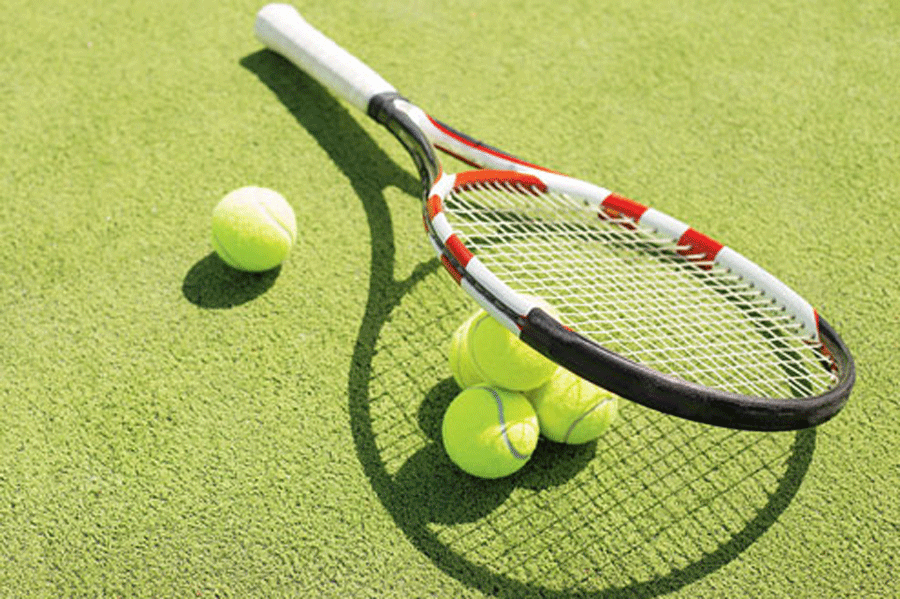Behold the beautiful and beloved one-handed backhand, but do it quickly, because time is running short for tennis’ lustiest shot.
Yes, the shot that made Roger Federer famous, the signature stroke of Rod Laver, a favourite of John McEnroe, and Pete Sampras and Martina Navratilova is fast going the way of the wooden rackets of the early 1980s, a relic that generates joy and nostalgia when a tennis aesthete lays eyes upon it, but one whose days may be numbered.
Even those who play with a one-hander have their regrets. Just ask Chris Eubanks, the late-blooming breakout star of American tennis this year, whose one-handed backhand is as smooth as they come. Eubanks said he was about 13 years old when he fell hard for the Federer backhand and decided to switch from the two-hander he had played with since he first picked up a tennis racket.
Not so long ago, the top ranks of the sport, especially the men’s game, had no shortage of one-handed backhands. In addition to Federer, Stan Wawrinka and Dominic Thiem won grand slam titles with the shot. Among the top 10 men now, only Stefanos Tsitsipas plays with a one-handed backhand. Tatiana Maria, No. 47 in the world, is the highest-ranked woman to rely mostly on her one-hander.
In more immediate terms, it has been a mostly terrible first week for one-handed backhands in the singles competitions at the US Open. As the second round wound down on Thursday afternoon, Wawrinka, who at 38 years still rips his one-hander as hard and as clean as anyone ever has, and Grigor Dimitrov were the only one-handed backhand standard-bearers.
“I’m not hitting as well as when I was winning grand slams, that’s for sure,” Wawrinka said after beating Tomas Etcheverry.
So did Lorenzo Musetti, the rising Italian whose silky one-handed backhand can make tennis cognoscenti drool. His stroke starts low, sweeps up and forward practically from knee level, then flies up with a high-stretching finish.
Somewhere along the way, it makes easy, pure contact, and that fuzzy yellow ball flies off his racket. Musetti, 21, is supposed to be a rival for Carlos Alcaraz, the 20-year-old world No. 1, during the next decade. Musetti is ranked 18th, but he has yet to make a grand slam quarter final.
In January, Tsitsipas faced Novak Djokovic in the Australian Open final. Tsitsipas’ backhand is another of the prettiest, smoothest strokes in the sport.
“My signature shot,” Tsitsipas said earlier this week. “It kind of defines me.”
Yet it took about three games to figure out Djokovic’s strategy that evening — pound ball after ball deep onto the Tsitsipas backhand. Djokovic won in straight sets.
And therein lies the great contradiction of the one-handed backhand. How can something so beautiful to watch, a stroke that is so etched into tennis history, be so exploitable, and why have a dwindling handful of players remained so loyal to it?
The answer to the first question, experts say, is mostly a function of the increasing role of power and velocity in the sport. Even clay courts, historically the slowest surface, play hard and fast these days. Players, who spend more and more time in the gym, keep getting bigger and stronger, and now hit forehands at more than 100 miles per hour.
Rackets and strings allow for so much top spin that rally balls from even average players are bouncing up to eye level, making it hard for even the 6-foot-7 Eubanks to get on top of the ball on some backhands.
Navratilova, who credits her mastery of a one-handed top spin backhand for her rise to near invincibility in the early 1980s is a little less draconian, but not that much. Navratilova said she would encourage young players to keep two hands on the racket — most of the time.
“Work on the one-handed slice and volley,” she said, though she added that trying to use it to keep up with modern pace and spin likely wouldn’t work.
Given all that, how to explain the ongoing devotion to the one-hander among a dwindling few? In a word, Federer.
As much as the Swiss master has done for the sport, he may be more responsible for the current generation of one-handed backhand devotees — and their shortcomings — than anyone.
New York Times News Service

